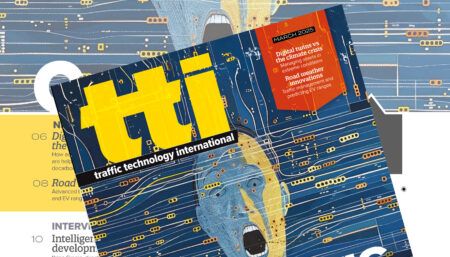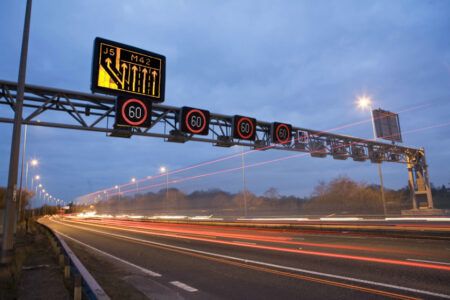With a population of 8.6 million, an influx of over 17 million international visitors each year, and many thousands of daily commuters, it is vital that London in the UK keeps its transport system functioning at all times. Transport for London (TfL) challenged two of its partners to use the latest innovative technologies on an intersection upgrade project to minimize the visibility of on-street furniture and to reduce installation times, thus limiting disruption to its road network.
Dynniq (formerly Imtech Traffic & Infra), in partnership with Cubic Transportation Systems (CTS), chose to use the Dynniq PTC-1 traffic controller with the new Remote Lamp Control System (RLCS). The chosen site, comprising a 14-pole junction on Borough High Street, forms part of the busy A3, which links London to the south coast. Although it is not the largest of installations, the site is complex in that it has all-round pedestrian facilities, pedestrian countdown timers and a bus priority system.
A job of this size would typically take eight days on street to complete. The PTC-1 RLCS is a solution based on a distributed controller system that takes some of the core controller technology from a single point (the traditional controller) to the signal heads, removing the need for extensive cable infrastructure and its associated costs. By opting to install the new technology, the job was completed in two days over a weekend.
The site also uses a combination of Clearview Magnetometers, FLIR Traficams, and Radix RTM300 ‘wands’ to provide the detection, which again demonstrated the versatility of the PTC-1 RLCS system, and its ability to support a diverse range of detection methods. As one of TfL’s priorities was to reduce on-street installation times, low-level terminations and wide-based SAPA poles were also used allowing the signal heads and poles to be completely sub-assembled off-site. The pole assemblies were then individually tested and transported to the junction as a complete sub-assembly, with only the street cable terminations requiring completion on-site.
The use of the PTC-1 RLCS system, in conjunction with using pre-assembled signal head assemblies, allowed Dynniq to undertake a technically complex installation, within a challenging environment, and to undertake the on-street installation within a significantly shorter timeframe, thus reducing disruption to the travelling public and the visual impact of the works, and ultimately delivering against the original project objectives.
The Dynniq PTC-1 unit used in the project is the latest design in traffic controllers for junction and pedestrian applications, and offers fully integrated modern communication interfaces, together with an operating system that enables flexibility for new applications. PTC-1 provides a low maintenance and cost effective solution through reliable and robust operation. The controller is fully compatible with the adaptable and versatile Peek Chameleon Outstation Transmission/Monitoring Unit, which contains a powerful processor enabling local control, detection and data processing to be carried out at the roadside. The unit also offers a flexible approach to interfaces, operating over fixed line, wireless or hybrid communications infrastructures.




